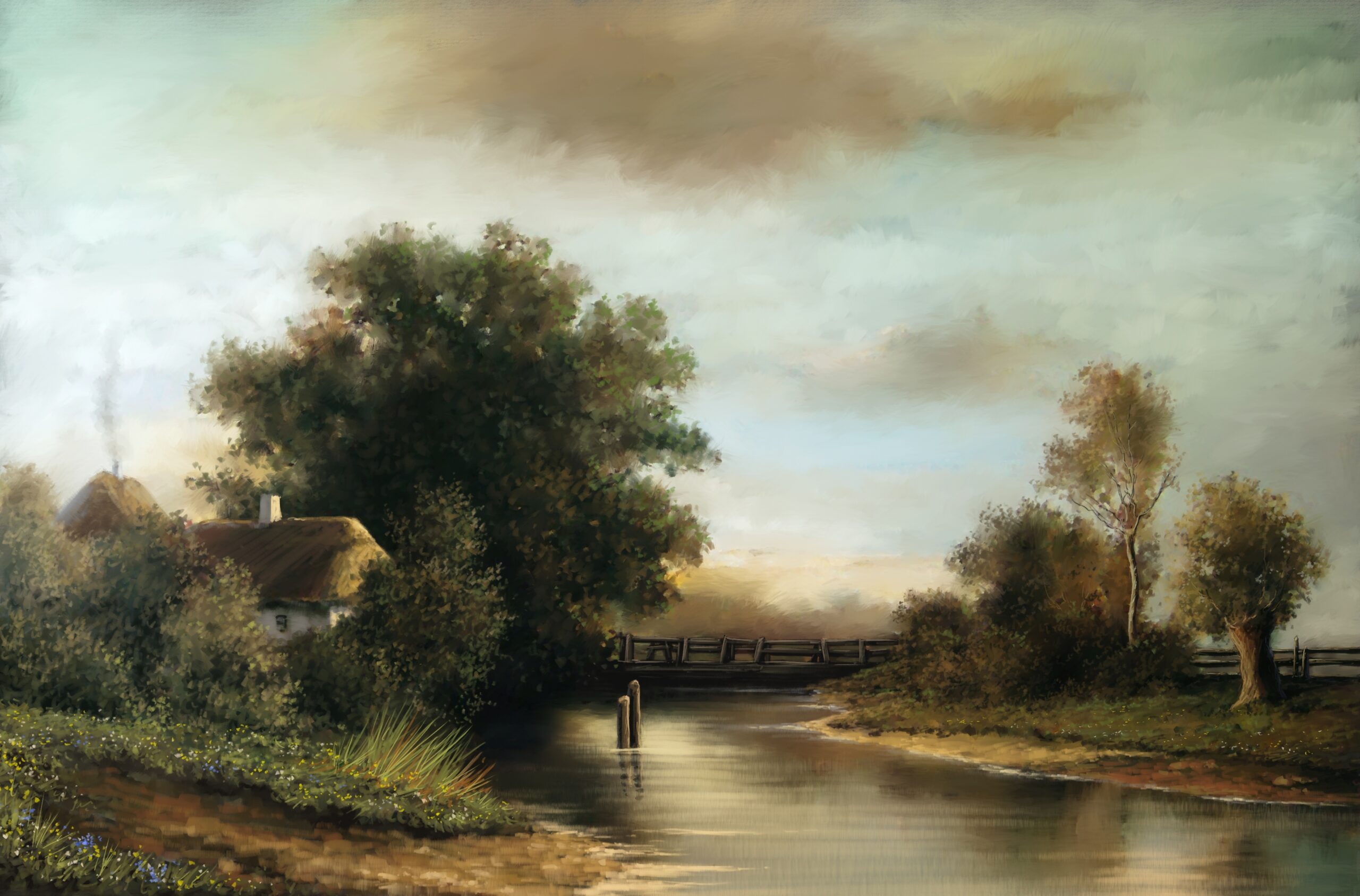Landscape painting has been a cornerstone of artistic expression for centuries, offering a glimpse into the beauty and diversity of the natural world. From the meticulous realism of classical painters to the daring experimentation of modern artists, the evolution of landscape art tells a story not just of technique but of shifting human perspectives on nature itself.
As an artist deeply inspired by the world around me, I find it thrilling to study this evolution and explore how I can weave traditional approaches with contemporary influences in my own work. Let’s delve into how landscape painting has transformed over time and what it means for today’s artists.
The Early Days of Landscape Painting
In the early days of Western art, landscapes were often relegated to the background, serving as decorative backdrops for religious or mythological scenes. During the Renaissance, artists like Leonardo da Vinci and Albrecht Dürer began to explore nature with more curiosity, sketching intricate studies of trees, plants, and mountains. These early depictions set the stage for landscapes to emerge as a subject in their own right.
The Baroque period saw a surge in landscape art, with artists like Claude Lorrain and Jacob van Ruisdael creating sweeping, idealized vistas that celebrated the grandeur of nature. These works often portrayed a harmonious relationship between humanity and the environment, reflecting the values of the time.
The Romantic Movement: Emotion Meets Nature
Fast forward to the 18th and 19th centuries, and we see a dramatic shift in how landscapes were painted. The Romantic movement brought with it an emotional connection to nature, emphasizing its power, mystery, and even danger. Artists like J.M.W. Turner and Caspar David Friedrich used dramatic lighting, bold compositions, and vivid color palettes to convey their awe for the natural world.
This period marked a turning point, as landscapes became a means of expressing the artist’s inner emotions and philosophical ideas. Turner’s turbulent seas and glowing skies, for example, weren’t just about replicating what he saw—they were about evoking a visceral emotional response.
Impressionism and Beyond: Breaking Free
By the late 19th century, Impressionists like Claude Monet and Pierre-Auguste Renoir revolutionized landscape painting once again, shifting the focus from grand, sweeping scenes to the fleeting effects of light and atmosphere. Their loose brushwork and vibrant use of color captured the ephemeral beauty of nature in a way that felt spontaneous and alive.
This period also marked the beginning of plein air painting, where artists worked outdoors to capture the essence of a scene in real time. The Impressionists’ influence rippled into the 20th century, inspiring movements like Fauvism and Abstract Expressionism, where landscapes were reimagined in bold, unconventional ways.
Modern Perspectives on Landscape Painting
Today, landscape painting continues to evolve, blending traditional techniques with modern perspectives. Many contemporary artists, myself included, are drawn to landscapes not only for their aesthetic beauty but also for their deeper significance in a rapidly changing world.
For me, painting a landscape isn’t just about capturing what I see—it’s about telling a story. Sometimes that story is personal, like a memory tied to a specific place. Other times, it’s a broader commentary on humanity’s relationship with nature. Climate change, urbanization, and environmental preservation are all themes that can be explored through the lens of landscape art.
Modern tools and techniques also open up new possibilities. Digital sketches and photo references allow artists to plan compositions more efficiently, while innovations in pigments and mediums give us greater control over texture and color. At the same time, many of us still look to the masters for guidance, borrowing their sense of light, perspective, and composition to anchor our work.
Blending Tradition and Innovation in My Own Work
In my studio, I strive to strike a balance between honoring traditional techniques and embracing modern influences. I’m particularly drawn to the interplay of light and shadow, a skill I’ve studied in the works of Turner and Monet. At the same time, I love experimenting with bold color palettes and textured brushstrokes to give my pieces a contemporary edge.
One of my favorite approaches is layering. I start with thin, translucent washes to build depth, much like the Old Masters did. Then, I add more textured, impasto layers to create dimension and movement. This combination of techniques allows me to create pieces that feel both timeless and fresh.
Why Landscape Painting Still Matters
In an era dominated by technology and urban life, landscape painting offers a chance to reconnect with nature. It reminds us of the beauty and fragility of the world we live in, encouraging us to slow down and appreciate the simple yet profound moments that can be found outdoors.
As an artist, I feel a responsibility to carry this tradition forward while making it relevant to today’s audiences. Whether it’s through the serene stillness of a quiet forest or the vibrant energy of a sunset over rolling hills, landscapes have the power to transport us, inspire us, and even spark meaningful change.
The Future of Landscape Painting
The evolution of landscape painting is far from over. As we face new challenges and opportunities in the 21st century, this genre will undoubtedly continue to grow and adapt. Whether through new mediums, techniques, or perspectives, artists will keep finding ways to celebrate and interpret the natural world.
For me, the journey of blending tradition with innovation is one of the most exciting aspects of being a landscape painter today. It’s a chance to learn from the past, embrace the present, and imagine the future—all while staying connected to the timeless beauty of nature.
Through my work, I hope to contribute to this ongoing evolution and inspire others to see the world with fresh eyes. After all, the landscape we paint is not just a reflection of the earth—it’s a reflection of ourselves.
